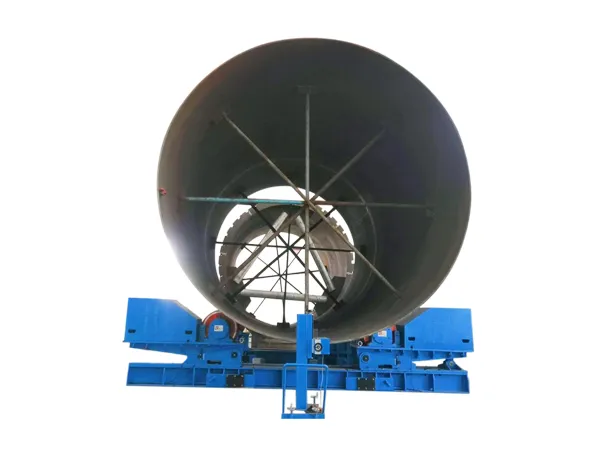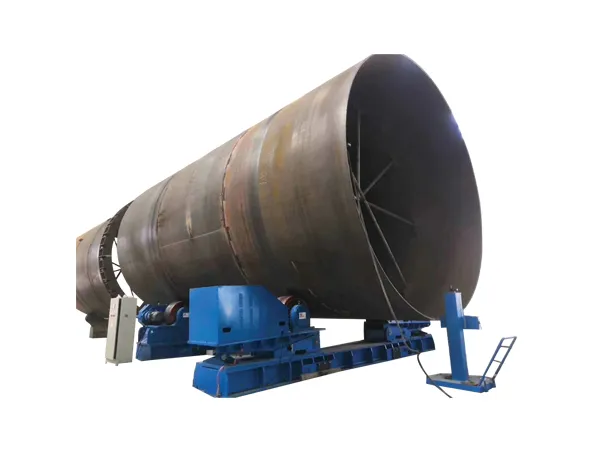Welding rotators are devices used in welding processes to rotate cylindrical workpieces, such as pipes, pressure vessels, or tanks, during the welding operation. The rotation helps achieve uniform and consistent welding, improves accessibility for the welder, and reduces the need for repositioning.
Welding rotator process flow

Workpiece Preparation
Ensure that the cylindrical workpiece to be welded is clean, free of contaminants, and properly aligned.
Prepare the welding joint by cleaning and beveling the edges if necessary.
Positioning the Workpiece
Place the cylindrical workpiece on the welding rotator, ensuring that it is securely and centrally positioned.
Adjust the rotator’s rollers or wheels to support and grip the workpiece evenly.
Securing the Workpiece
Secure the workpiece in place using any clamping mechanisms provided by the welding rotator.
Ensure that the workpiece is stable and won’t shift during rotation.

Setting Rotation Speed and Direction
Set the desired rotation speed of the welding rotator. The rotation speed is often determined by the welding procedure specifications (WPS) or the specific requirements of the welding project.
Choose the appropriate rotation direction (clockwise or counterclockwise) based on the welding requirements.
Weld Preparation
Prepare the welding equipment, including the welding machine, electrodes, shielding gas (if applicable), and any other necessary tools.
Set the welding parameters according to the welding procedure specifications.
…
For more detailed information about the welding rotators process flow, please click to visit:https://www.bota-weld.com/en/a/news/welding-rotator-process-flow.html

